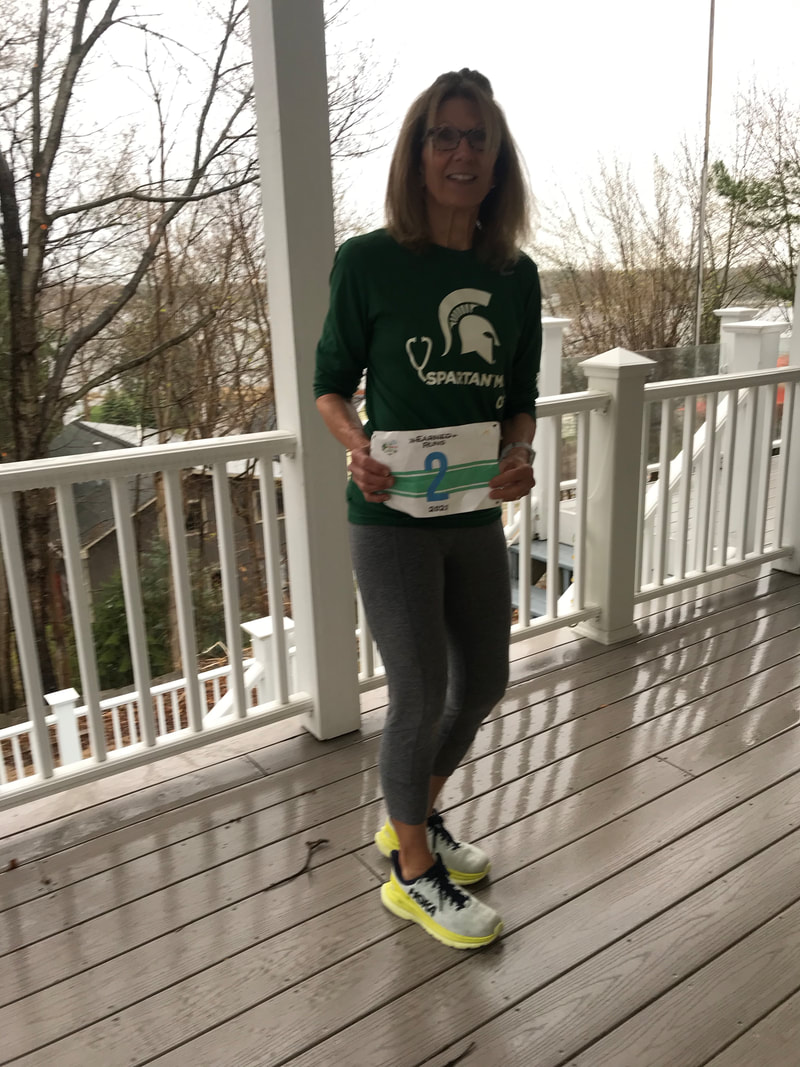BLOG
|
|
TRAIL SHOE STUDY NEWS FOR WALKERS AND RUNNERS The results of a study published in the October 2017 issue of Journal of Sports Medicine and Physical Fitness by French researchers provides insights that might be helpful in the selection of athletic shoe type. It is the only project, in my recall anyway, in which runners and walkers were involved, the results applied to both groups, and the discussion detailed potential differences.
The researchers hypothesized that highly-cushioned maximalist shoes generated less thigh muscle oscillations (and less pain and injury risk) than minimalist shoes, which provided greater running economy. They sought to determine if wearing a thigh compression sleeve would lessen oscillations in minimalist shoe wearers. In other words, the scientists wondered if the experience of wearing a higher performing minimalist shoe could be improved comfort-wise WITH compression, to the level enjoyed by maximalist shoe wearers WITHOUT compression. The research protocol attempted to demonstrate whether wearing an elastic thigh compression sleeve would reduce the number of muscle oscillations (“vibrations generated by impacts with the ground”), measured in 2 of the quadriceps 4 major muscles, in walking and running athletes who wore minimalist versus maximalist shoes. Such oscillations had been tied to greater pain and injury rates in previous research studies. Details; the French scientists knew from previously reported research that:
Study design: Eleven healthy males were recruited for the study, with a mean age of 25 years and BMI of 22. Muscular oscillations were recorded on two thigh muscles used in trail work, the vastus medialis and rectus femoris. Participants performed 16 one-minute runs on a flat treadmill, in random order wearing maximalist or minimalist shoes, walking (up to a speed of 6 km or 3.7 miles per hour) or running (up to a speed of 10 km or 6.2 miles per hour), without or with compression sleeves*. Three different compression pressures were applied to the thigh using the sleeve (low, moderate, high). Thigh circumference determined compression sleeve size. The findings: 1) maximalist shoes significantly decreased muscular oscillations in thigh muscles during walking and running 2) sleeve compression significantly reduced oscillations in both types of shoe wearers 3) the greatest oscillation decrease occurred when compression pressure was highest 4) minimalist shoes with high compression reduced muscle oscillations as much as maximalist shoes with lower compression. Walking v running discussion: a) During walking, initial contact with the ground is made with the heel in both minimalist and maximalist shoes, according to a meta-analysis referenced by the study. Therefore, the decrease in oscillations in walkers wearing maximalist shoes was thought by the study researchers to be linked to lower impact at the heel due to cushioning by the thick sole. b) Point of initial contact with the ground in runners isn’t consistent, according to the same meta-analysis. Minimalist shoe wearing tends to move landing to mid-foot which decreases impact. There are other biomechanical adaptations that occur with minimalist shoes to reduce impact but the higher speed involved in running increases impact force and oscillations more than the helpful biomechanical changes decrease it. Therefore, maximalist shoe cushioning has a major role reducing oscillations in running just as they do in walking. Compression sleeves: reduce muscle oscillations whether worn on calf or thigh, which may be related to better muscle support and reduction in stride length. Earned Runs comment: The title of this research paper “Maximalist vs. minimalist shoes: Dose effect of elastic compression on muscular oscillations” by Jules Gellaerts and colleagues doesn’t indicate that the study was designed to help trail runners but the introduction provides this information. However, thigh muscle oscillations could not be measured if participants ran and walked over this type of terrain, so instead the work was performed on a flat treadmill in a laboratory setting. As a result, the good news for runners and walkers is that this study’s findings may pertain to both road and trail enthusiasts. Elastic compression in this study was applied via a thigh sleeve. Many runners wear calf sleeves. The discussion suggests both calf and thigh compression may have similar benefits, but in this study the results are only derived from the use of thigh compression. The researchers did not include participants who wore traditional shoes, which are neither maximalist or partial/fully minimalist. Women and older participants were not part of this study. Final impression: shoe selection remains a matter of preference for most runners and walkers. Studies like this one may help inform our choices especially when it comes to less traditional shoes, and the decision to wear compression gear. Over the long, non-professional athletic career many wish to enjoy, avoiding injury would seem to be an important goal. Perhaps the addition of compression gear may assist with remaining healthy. RUN & MOVE HAPPY! *CompresSport ForQuad Compression Sleeve (thigh); below is possible product used in the research study, available on amazon.com. https://www.ncbi.nlm.nih.gov/pubmed/28085121
0 Comments
Your comment will be posted after it is approved.
Leave a Reply. |
BRIDGE TO PHYSICAL SELF
Running, walking, and fitness activities enable us to experience our physical selves in a world mostly accessed through use of fingers on a mobile device. AuthorEARNED RUNS is edited and authored by me, runner and founder. In 1978 I began participating in 10K road races before 5Ks were common. I've been a dietitian, practiced and taught clinical pathology, and been involved with research that utilized pathology. I am fascinated with understanding the origins of disease as well as health and longevity. Archives
November 2023
CategoriesNew! Search Box
Earned Runs is now searchable! Check it out...
|


 RSS Feed
RSS Feed